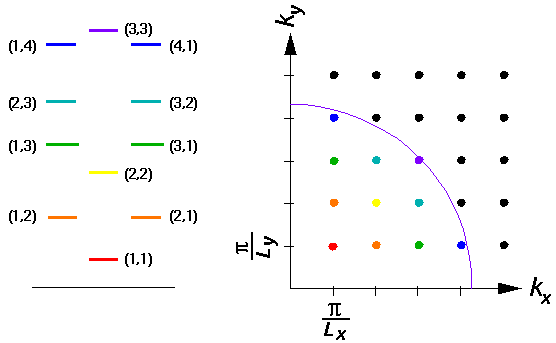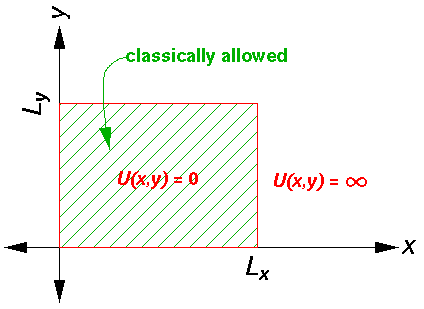

(We use here the "alternative origin" rather having the well
centered on the origin.) As before we have the "boundary" condition
that  be zero in the infinitely disallowed
region outside the rectangle. Inside the rectangle, where the
potential is zero, we have the Schrödinger's equation:
be zero in the infinitely disallowed
region outside the rectangle. Inside the rectangle, where the
potential is zero, we have the Schrödinger's equation:

Since the Hamiltonian is the sum of two terms with totally separate variables, we try a product wavefunction:
 =X(x)·Y(y)
=X(x)·Y(y)
As usual with separation of variables, the Schrödinger's equation separates into two terms, one only in x the other only in y:
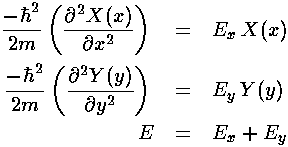
These familiar differential equations have the usual solution:

Now we apply our boundary conditions

The resulting normalized wavefunctions are:
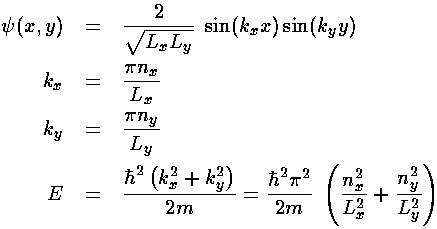
Here is a plot of the probability density for a typical wavefunction: nx=2, ny=4, for Lx=4, Ly=3:
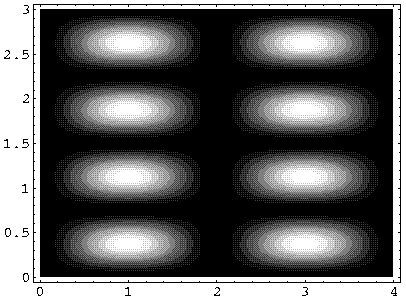
It is often convenient to describe wavefunctions in terms
of "k-space" or "n-space", that is we label
wavefunctions by k=(kx,ky)
vector or by n=(nx,ny).
In either case there is a lattice of points in the plane each one of which
represents a possible wavefunctions. In the case of n-space,
the lattice consists of those points with whole number
x,y values. In the case of k-space, the
lattice points are spaced by  /Lx,
/Lx,
 /Ly.
(k-space goes by many different names.
The momentum p=
/Ly.
(k-space goes by many different names.
The momentum p= k is closely
related to k, hence "momentum space". k is also
closed related to "reciprocal lattice space". Since
k=2
k is closely
related to k, hence "momentum space". k is also
closed related to "reciprocal lattice space". Since
k=2 /
/ ,
k is often called a "wave number" [danger: the same
thing without the 2
,
k is often called a "wave number" [danger: the same
thing without the 2 is also called
wave number].) The main idea for us is that
E
is also called
wave number].) The main idea for us is that
E  |k|2
|k|2
Here is an energy level diagram showing the relationship between k-space, n=(nx,ny) and the energy for a square (Lx=Ly) square well.
